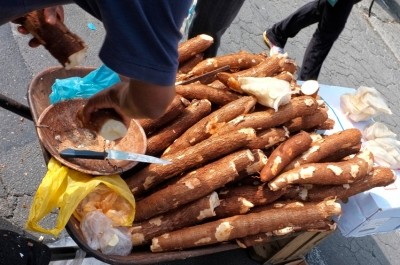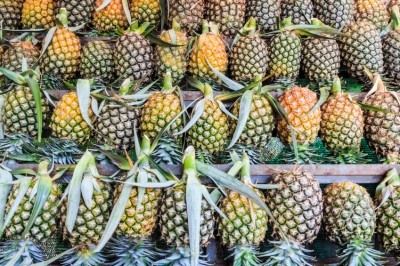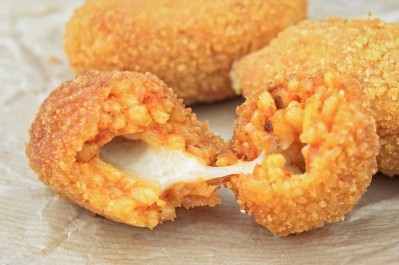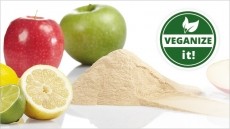From fermented bubbles to crispy fruit: Texture will be 2018's top trend, says Mintel
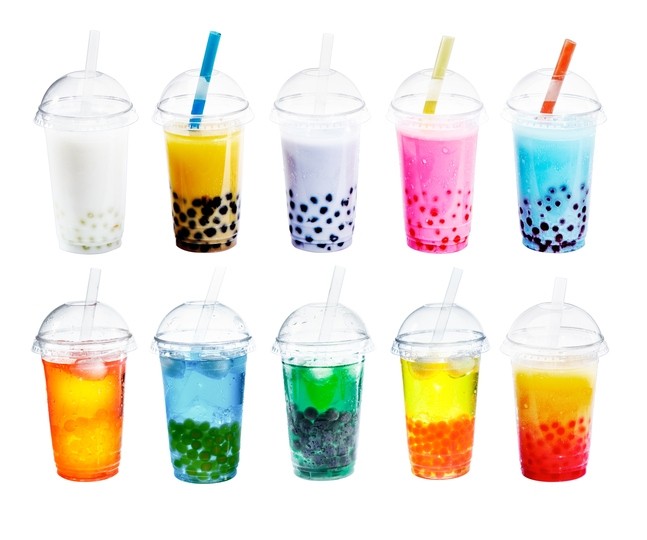
"In 2018, the sound, feel, and satisfaction that texture provides will become more important to companies and consumers alike," write Mintel market analysts in the firm's global food and drink trends 2018 report.
Europe leads the way for launches…
Mintel’s global new product database, which tracks new product launches around the world, noting their key characteristics, shows that European companies and brands are more likely than firms in any other region to describe the inherent texture of their products.
This is usually done in simple, on-pack descriptions of the products such as carbonated beverages, creamy dairy products and juicy fruits.
And just as this year's trend for colour centred on natural sources - green matcha tea, golden turmeric or black from activated charcoal - brands are drawing attention to the texture attributes obtained through natural processing techniques, such as baking or fermentation.
Czech company AllNature sells crunchy freeze-dried fruit, such as strawberries and pineapple that can be added to muesli, porridge or yoghurt. It explains on pack that the strawberries are quickly frozen and then slowly dried in vacuum to retain the flavour, aroma, texture, natural colour, vitamins and minerals.
Crisps and pita snacks are claiming to be extra crunchy because they are twice-baked while Dutch Infinity’s organic lemongrass and ginger kombucha is
naturally carbonated thanks to the probiotic cultures that kickstart the fermentation process.
Spanish Velada’s Mediterranean muscat wine from Valencia, retailing in Lidl, has undergone a packaging redesign and describes itself as “a naturally carbonated wine from an exclusive fermentation”.
Meanwhile, fermented drinks such as kombucha and fruit kefir tend to have naturally occurring sediment deposits that are purposely not removed by manufacturers.
The appeal of chia seeds, which change texture when soaked in liquid becoming soft and slippery, has been harnessed by manufacturers of dairy desserts or drinks, such as UK start-up Wowchia’s fruit drinks with chia seeds.
Packaging can also come into play. Yoplait launched a range of yoghurt drinks with natural fruit chunks in Mexico, Disfruta, that comes in see-through bottles to allow consumers to ‘see the flavours.’
…but looks east for inspiration
Although Europe may lead the way in launches laden with texture descriptions, Asia is a model for the potential of unexpected applications of texture in food and drink, says Mintel.
“The region hosts a range of beverages with pulp, tapioca pearls, and extra carbonation along with food that also boasts innovative textures that might be unheard of in other parts of the world.”
Forty-three percent of Chinese adults who buy ready-to-drink (RTD) tea say they are interested in RTD options with fruit bits while one third of Chinese consumers say the ideal yoghurt would have cereal, grains, or seeds.
Taking the trend online
The popularity of colourful foods has an understandable appeal on social media where appearance is everything. But texture can also come into play here too, Zegler said.
Taking multi-sensory beyond the brand
The Boba Room was a pop-up exhibition in New York in 2017 curated by two Chinese designers with photogenic rooms that gave visitors the feeling that they were walking through cups of bubble tea.
“Texture can help consumers perceive products as fresh, filling or fun. Each characteristic reflects the influence of social media, which has inspired many consumers to share their food and drink photos and experiences online," she told FoodNavigator.
“While photos can capture some of texture enhancements, a lot of opportunity exists for brands to add new textures to food and drink that can be shared as videos via SnapChat, Instagram Stories or Facebook Live.
“This is particularly true of products that add novel or surprising textures, which could encourage consumers to share videos of the reactions of their friends and family as they try a new confection, snack or beverage that contains non-traditional textures.”
This will resonate particularly with ‘the iGeneration’ - teens and young adults aged between 10 and 27 in 2018, depending on the region, said Zegler.
“The quest for experiences provides opportunities for multisensory food and drink that uses unexpected texture to provide the iGeneration— as well as consumers of all ages—with tangible connections to the real world as well as moments worth sharing either in person or online.”

